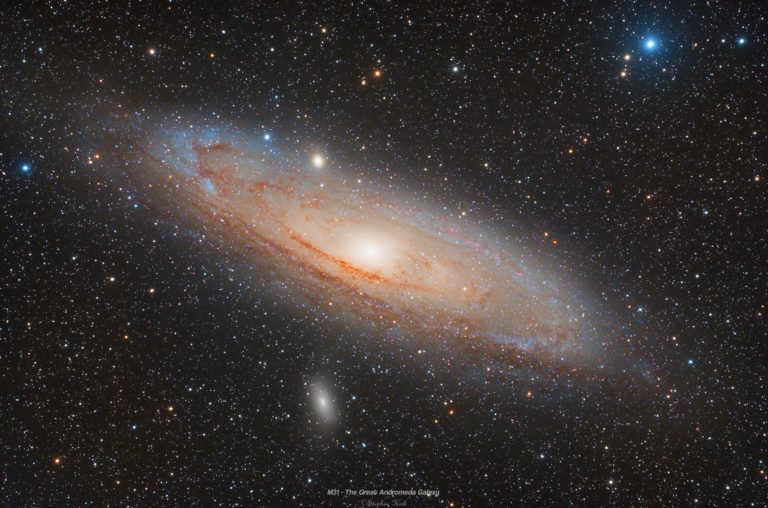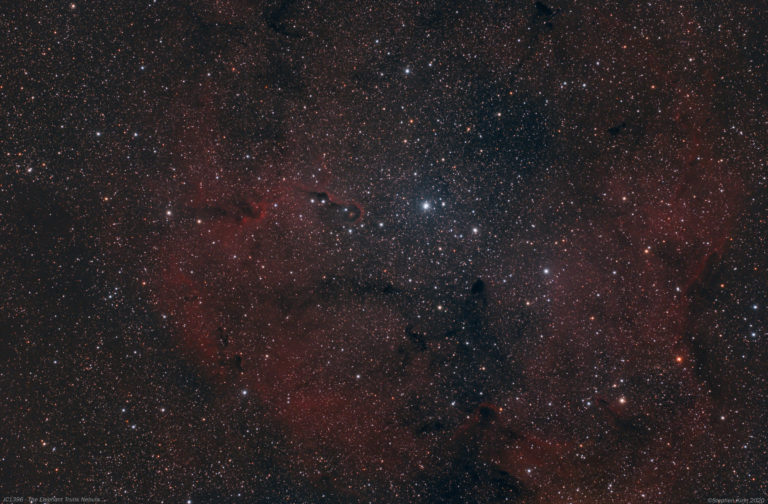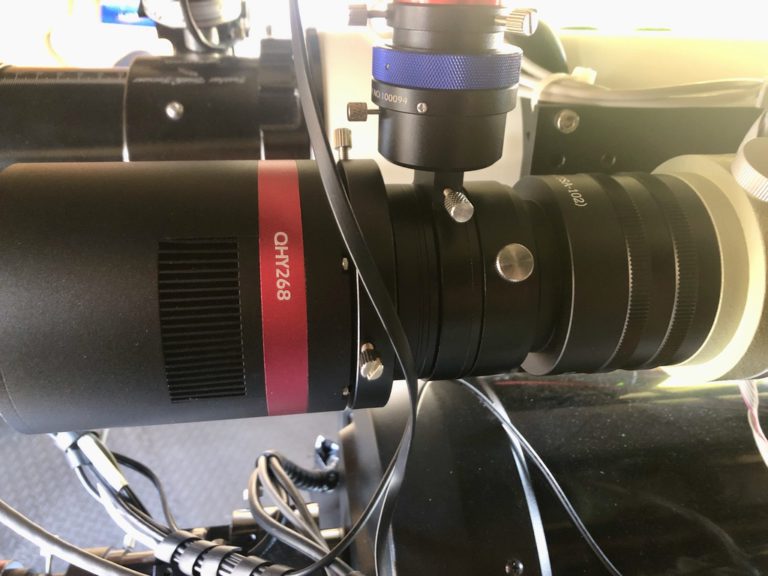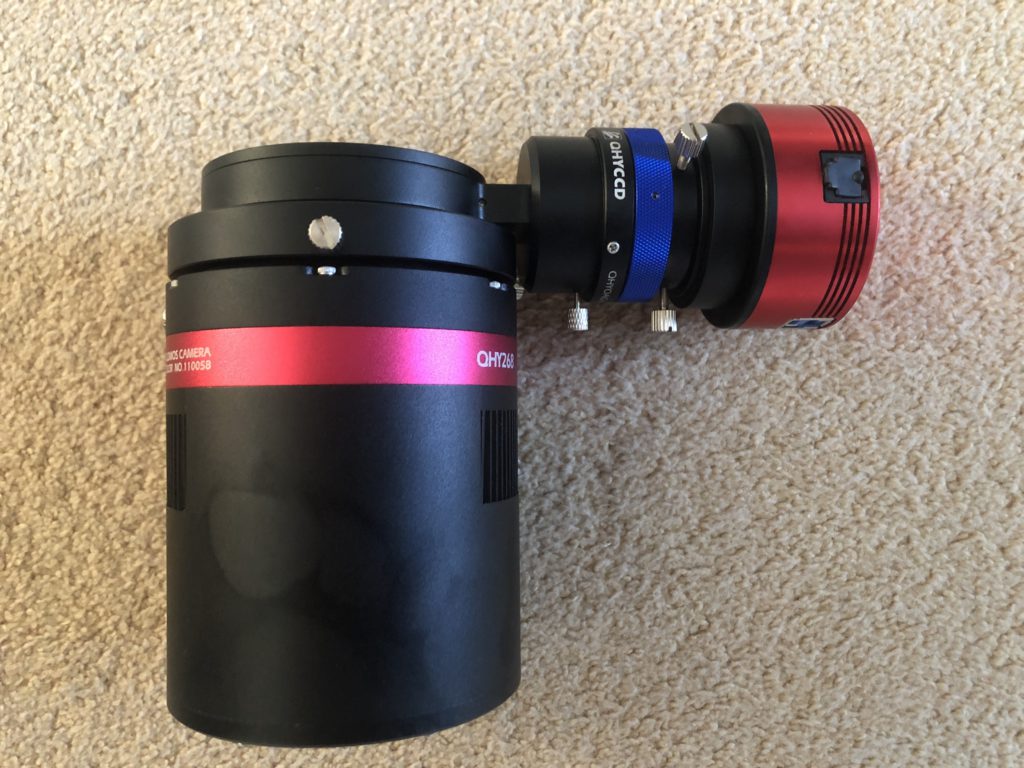I have imaged M31 several times before and on this occasion I thought I’d turn the QHY268C onto the galaxy. M31 – The Great Andromeda Galaxy (82 subs) This image is made up from a total of 82 exposures, each of 180 seconds for a total integration time of about 2.5 hours. I used my Takahashi FSQ85 refractor at its native focal length. I used an LDAS 2″ light pollution filter in front of the camera to try and cut through the light pollution a bit. Imaged from my backyard in Nottingham, October 2020 on MESU 200 mount and OAG used with an ASI 120mm guidecam. Data captured with Sequence Generator PRo and processed in Pixinsight and Photoshop CC. M31 – The Great Andromeda Galaxy (49 subs)
IC1396 Elephant Trunk Nebula I have imaged IC1396 before. It passes directly overhead at my location in Nottingham, UK.Imaged here on 14-15 October 2020 with FSQ85 refractor and QHY268C OSC camera on MESU 200 mount.A total of 55 x 240s exposures. Developed in PixInsight and Photoshop CC. Image capture with Sequence Generator Pro. Annotated Version
North American and Pelican Nebulae Full Size Image here (opens in a new tab).This my first semi-completed image from the QHY268C and so far I am impressed with its performance. I discuss unboxing the camera and also how I connect it to the FSQ85 in other posts on my site.This image – above – of The North American and Pelican Nebulae is a stack of 47 x 180s exposures at Gain 0 and Offset 30 at -15C on my Takahashi FSQ85. This is my first deep-sky CMOS camera and I had to research how to preprocess the data from the camera and I will discuss this in another post.Since I acquired the camera and in keeping with the “new gear curse”, I have been constantly frustrated by wet weather and cloudy skies for almost a month. The 47 exposures for this image were spread out over about seven imaging sessions,…
Introduction I’ve bought a QHY268C colour CMOS camera and a QHYOAG-M as discussed in my post here. As I explain in that post, my intention is to connect this up to my Takahashi FSQ85 “BabyQ” and make it an extensible system so that with easy and minor changes I can also connect the camera/OAG assembly to my Williams Optics Redcat 51, Samyang 135mm lens and maybe other optical systems (although its primary use will be on the FSQ85). I also explain in that post how to configure the QHY268C and the OAG assembly such that both camera and guide camera can both reach focus simultaneously by “padding” out the camera side of the OAG with about 13mm of spacers between the OAG and the camera in order to get both cameras to simultaneously focus.I now needed to determine a way to mount the OAG-QHY268C assembly via a threaded method to…
Introduction And Rationale For Purchase QHY268C on Takahashi FSQ85. Note the totem pole of adapters to the right of the QHYOAG-M in order to get a screw fit onto the FSQ85 focuser I am already a very happy owner and user of two CCD mono cameras and associated filter wheels; an Atik 460 CCD with EFW2 and a Moravian Instruments G2-8300 CCD camera. I have been very pleased with the performance of both, I enjoy using them and will continue to do so. I have connected my Moravian CCD for use exclusively on my Samyang 135mm lens and it is semi-permanently attached to it. I have my Atik460 semi-permanently attached to my TEC140 scope. I do not want to disturb these two hardware arrangements. However, this leaves me without a camera for my excellent Takahashi FSQ85. So with this in mind I needed to acquire a third, cooled, astro-imaging camera.I…





